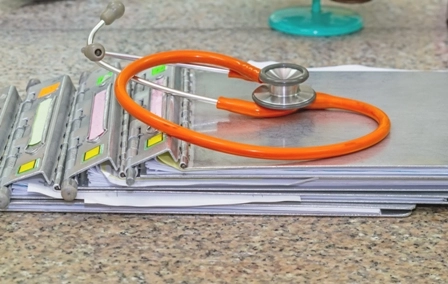Take Note of This Global View on Renal Imaging

Focus on documentation for easy reporting of multiple uses.
Physicians use renal ultrasounds to assess the size, shape, and location of a patient’s kidneys and to assess pathological processes that may involve the kidneys. Ultrasound can help the physician determine needle placement for biopsies or tubes for drainage. Ultrasounds can detect renal
cysts, calculi, tumors, abscesses, obstruction, fluid collection, and infection within or around the kidneys.
With so many potential uses of renal ultrasound, it’s important to know the ins and outs of documentation and coding. Read on for a refresher on how you can support the service and be appropriately reimbursed.
Distinguish between ‘limited’ and ‘complete’
One of your first steps in coding ultrasounds is to verify whether the test was ‘limited’ or ‘complete.’ According to CPT® guidelines, “If less than the required elements for a ‘complete’ exam are reported (e.g., limited number of organs or limited portion of region evaluated), the ‘limited’ code for that anatomic region should be used once per patient exam session.” For a renal ultrasound you should report 76775 (Ultrasound, retroperitoneal (e.g., renal, aorta, nodes), real time with image documentation; limited).
Other info: The more details the physician can include in his documentation, the more successful your coding will be. Items that should be included when documenting renal sonograms are:
Delve into the Doppler Study for Different Diagnosis
Sometimes the urologist will choose to perform a Doppler ultrasound, also known as a duplex study. Doppler ultrasound allows the physician to assess renal arterial and venous patency and check for suspected conditions such as renal artery stenosis. Associated diagnoses might include any of the following:
Correct coding for soft tissue and doppler/duplex vascular study of the kidneys includes reporting:
Remember: Append modifier 59 (Distinct procedural service) to 76775 on your claim to differentiate the ultrasound test from the imaging duplex scan. CPT® code 76775 is bundled into code 93976, but may be unbundled and paid with the above modifier.
Be careful: Insurers rarely pay for renal doppler ultrasound without specific documentation with the above diagnostic ICD-10 codes.
Know When Complete Retroperitoneal US Applies
Before finalizing your claim, remember one more important clinical and coding point for Medicare and other insurers.
“According to CPT® (Current Procedure Terminology), CMS (Medicare), and the American College of Radiology (ACR), for patients with a clinical history suggesting urinary tract pathology, sonographic evaluation of both the kidneys and urinary bladder at the same encounter should be coded as a complete retroperitoneal ultrasound,” says Michael A. Ferragamo, MD, FACS, clinical assistant professor at the State University of New York at Stony Brook.
Therefore, the correct code to report would be 76770 (Ultrasound, retroperitoneal [e.g., renal, aorta, nodes], real time with image documentation; complete).
Take note: Many payers (but not all) as well as Medicare will not pay for both renal (76775) and bladder (76857, Ultrasound, pelvic [nonobstetric], real time with image documentation; limited or follow-up [e.g., for follicles]) sonograms reported at the same time. ICD-10 diagnostic coding can include kidney or bladder pathological diagnoses.
This urinary tract pathology exception is important because otherwise 76770 would require “real time scans of the kidneys, abdominal aorta, common iliac artery origins, and inferior vena cava, including any demonstrated retroperitoneal abnormality,” CPT® guidelines state.




